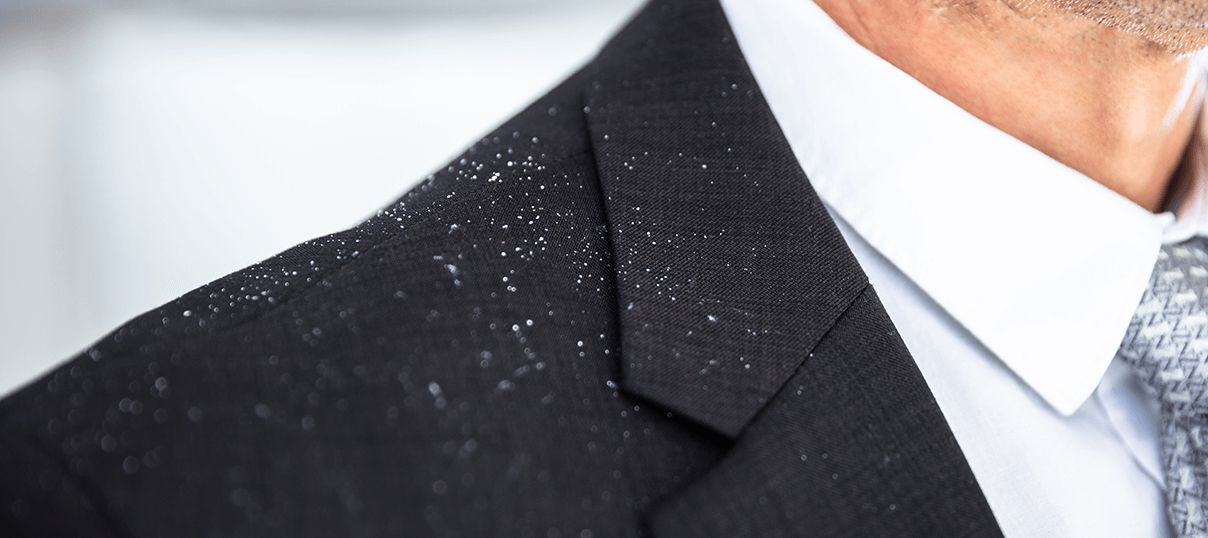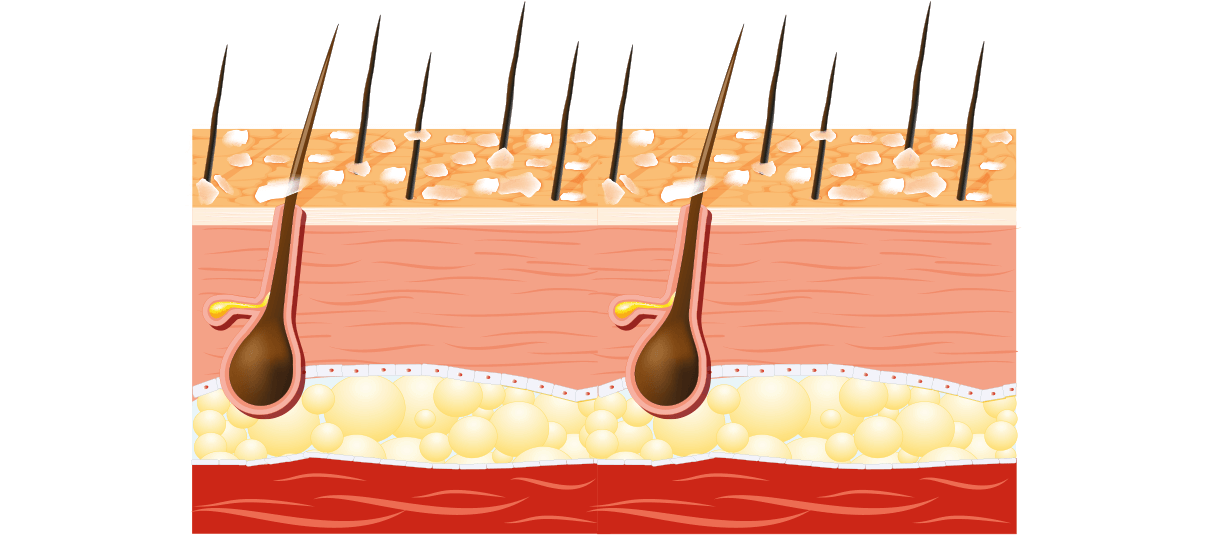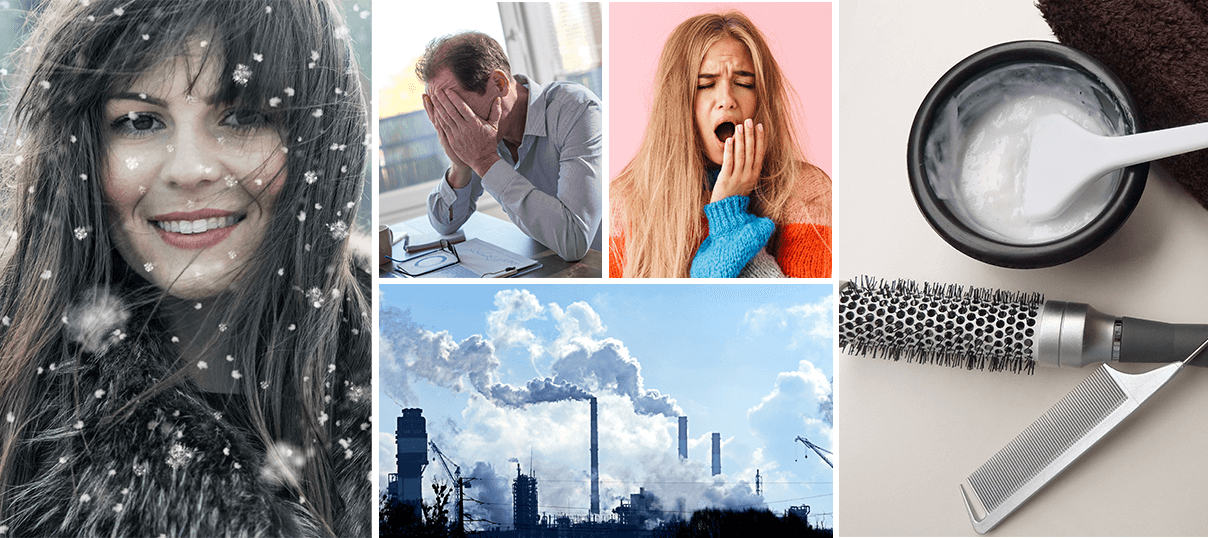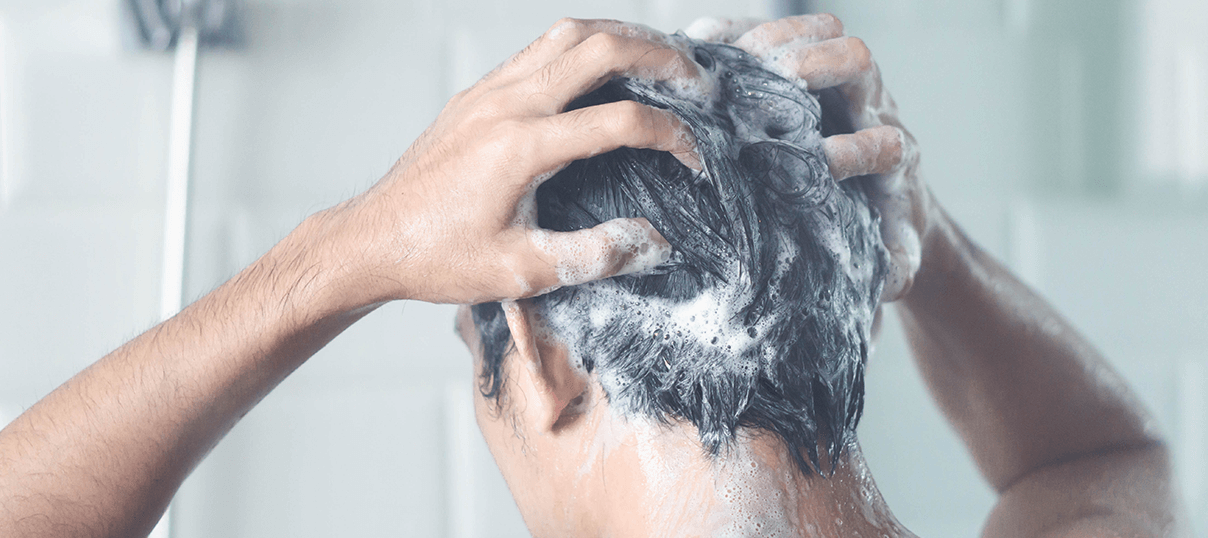Dandruff is a very common scalp condition that affects one in two people during their lifetime. Caused by excessive renewal of scalp skin cells, it manifests itself as a rapid production of dead skin flakes which are then visible in the hair or on clothing. Although harmless, dandruff is rather unsightly and often occurs with itching. Therefore, it is important to manage it effectively.

How dandruff forms
Our scalp is covered in a protective oily film composed of sebum. A yeast-like fungus called Malassezia naturally lives in this oily substance and feeds off it. But in some people and at certain times, there can be an excess proliferation of Malassezia. This causes scalp inflammation which results in itching. An immune response is then triggered against the Malassezia, which leads to a rapid reproduction of the surface skin cells and chronic desquamation. Small flakes of dead skin detach themselves from the scalp: this is dandruff.
Starting from adolescence, one person in two will have dandruff at some stage in their life. Men are the most frequently affected, but many women suffer from it too.

The different types of dandruff
There are different types of dandruff, which can vary in severity:
– Dry dandruff:small whitish or greyish flakes (build-up of dead cells) fall from the hair spontaneously or during brushing and settle on clothing. The scalp is also covered in scales, with no visible redness.
– Oily dandruff: larger, thicker and greasier scales are visible, along with slight redness on the forehead along the hairline.
– Pityriasis amiantacea: in some rarer cases, very thick white or yellowish scales can build up at the base of the hair shafts and bind them to one another in tufts.
Dandruff is not generally constant; it occurs in bouts with periods of improvement in between.

Predisposing factors
When it comes to dandruff, we are not all equal: some people tend to be prone to it and will frequently suffer from bouts of dandruff, whereas others will never get it at all. Nevertheless, certain factors can contribute to the appearance of dandruff:
– Winter and wet weather.
– Stress and strong emotions.
– Fatigue and overexertion.
– Pollution.
– The use of harsh hair products.

Treating dandruff
Nowadays, highly effective anti-dandruff treatments are available. These include local antifungal treatments in the form of shampoos, lotions or creams which aim to eliminate excess yeast from the scalp, soothe inflammation, and bring skin cell production back to normal.
However, there is no permanent solution: if your scalp is frequently subject to dandruff, repeated treatment at each bout and a regular localised maintenance treatment will be necessary to reduce relapses and keep your scalp clear. See your skin specialist to decide on the most suitable treatment for your case.
1-P Bruderer. Rev Med Brux 2004 ; 25: A 273-6
2- Lisper D., Chosidow o et Grosshans E, Encycl Méd Chir (Elsévier, Paris), Dermatologie, 12-220-A-05, 1997, 6p. (lésions élémentaires de la peau : séméiologie cutanée.. )
3- Perrot JL, Misery L. Encycl Méd Chir (Elsévier, Paris), Dermatologie, 98-827-A-10, 1999, 7p. (Dermatoses liées à MF)
4- GE Pierard ; Réalités thérapeutiques en Dermato-Vénérologie, 2009 Janvier, N°183.



